The allure of sleeping in a tent in the rain
Regardless of your experience, the call of the wild has a very alluring effect on people. Imagine a perfect night sky unpolluted by artificial light, an open fire, and stories of stars taking you to other worlds. Unlike the classic evenings where you lie in your bed and scroll through social media/watch Netflix, camping with the soothing sound of rain really improves your overall well-being.
The therapeutic power of rain sounds
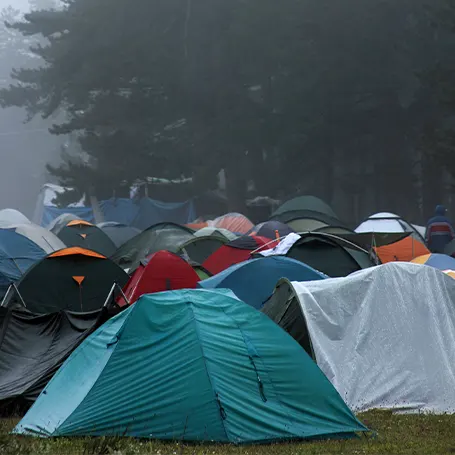
We'll start with the most obvious – mental health benefits.
Who else sleeps best next to the rain? Of course, we are not talking about thunder, but rain droplets fall from branches.
When the sound is quiet or moderately loud and steady like rain, our brain interprets it as a calming signal. In addition, this soothing noise will “cover” some less pleasant sounds that would disturb and disturb us.
In fact, it can also mask unwanted thoughts and emotions. For example, if you focus on the sound of rain, you can temporarily forget your worries and simply relax.
Therefore, it has a beneficial effect on reducing stress, while contributing to emotional and physical health (depending on how many s'mores you have eaten).
Connecting with nature's lullaby
Now you may be wondering – why do I have to go to nature to enjoy the sound of rain? We agree, you don't have to. A great alternative are apps or simply stay in your home. However, you won't get the same sound. It varies depending on the type, amount and area of rain. The latter is the most important, because the sound of a drop of water hitting leaves is much softer than when it hits concrete.
That's why it gives a white noise effect – consistent and steady sound that covers other background noises, which lulls the brain into a state of relaxation. These are excellent conditions for deeper and more restful sleep. A repetitive and predictable pattern helps regulate breathing and heart rate, which gives a meditative effect on the mind. Finally, the air becomes cooler during rainfall, often conducive to better sleep.
Choosing the right tent
Many people think that camping trip is only for those who do not have the money to “afford” decent accommodation, but when you make a list of things, you will see that it is not so cheap. That doesn't mean you'll need a fortune, but if you want a good experience, you must pay attention to the key things.
Waterproof materials and durability
You are aware of how certain materials' properties can affect sleeping in a tent, especially if it rains. Then it is necessary to choose waterproof materials with a high level of durability. Manufacturers use polyamide or polyester, while for the outer part, they use a coating that prevents the flow of moisture.
The level of permeability also depends on its thickness, so it is important to check this before buying. For example, a water column of 1000 mm already ensures 100% waterproofness (rain) of the outer material. If you want the tent to be 100%, choose a tent with welded seams.
Make a decision based on the occasion, season, camping site and length of stay. Any tent will serve its purpose if it is set up correctly, but when choosing a waterproof model, you should also pay attention to its interior.
Rainfly and proper ventilation
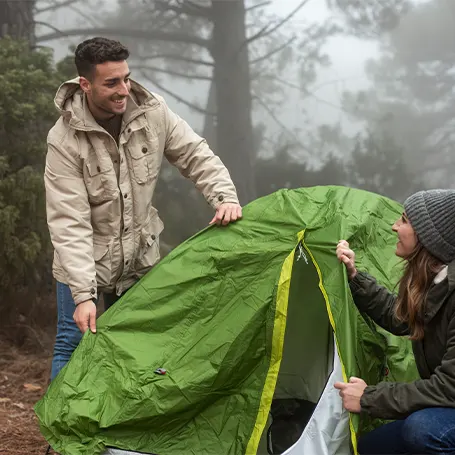
So the inside of the tent also keeps you dry. It is made of stretched-impregnated canvas or similar material, enough for a small hole or a touch to start “watering”. To be safe and maintain tent dry, buy a two-layer tent from a reputable manufacturer. Here are some other factors to consider when selecting a tent:
- Ventilation design – look for mesh panels at tent door or windows that are placed to allow for airflow while keeping bugs out
- Vestibules and rain protection – extended area outside the main tent entrance, serves as a sheltered space for rain gear storage and an additional layer of protection against rain
- Seasonal suitability – 4 season tenses are more robust than single wall tents and inner tent better equipped to handle harsher weather conditions
- Tent size and capacity – smaller tents can lead to poor ventilation and an unpleasant experience, while oversized ones may be challenging to keep warm
Tip: Before buying, read as many user reviews and seek recommendations of active campers as possible.
Preparing the campsite for rainy nights
Getting dirty, mud, confined in a small space… What if the tent leaks or worse if it gets struck by lightning? Get rid of these worries by getting ready for those rainy nights!
Avoiding low-lying areas
You should elevate your sleeping area to create an insulating barrier between you and the cold, damp ground. You can do this with a foam pad or camping mat that you will place under your sleeping bag and bivy bag. So, by avoiding low-lying areas, you will prevent moisture from the ground from seeping into your sleeping gear.
Clearing the ground and using a groundsheet
To ensure comfort, protect your gear and maintain a dry and clean sleeping area, clean the surface. Remove all rocks, sticks, and other debris to get a smooth and level surface for your tent. It is also important to protect against moisture, by placing a groundsheet or footprint under the tent. Thus you will create a moisture barrier between the tent floor and the ground, preventing wear and tear. Finally, you will prevent insects and pests from crawling into your tent from the ground.
Creating a trench around the tent
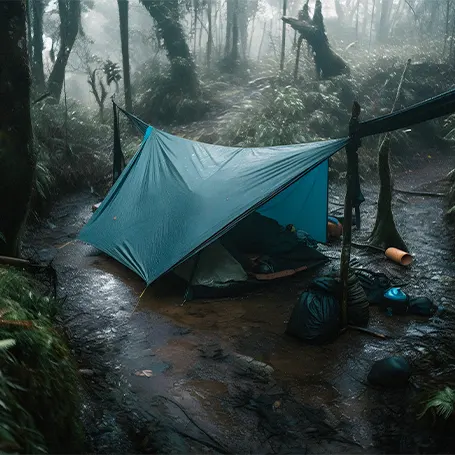
Many people completely forget about one detail after buying a tent and setting it up safely. When you decide on the place where you will put the tent, make a trench. In this way, you will create drainage channels and the rain will not be a problem. Well, roll up your t-shirt sleeves and get your digging material!
You will need a shovel or digging tool, and a tarp or groundsheet. Before that, you should choose a flat, level area with good drainage.
No matter how good it is, clean it before you start digging. Use small sticks or stakes to mark the perimeter or the place where you will set up your tent.
When you finish digging, pile up the excavated soil on the side away form the tent. That way you will create a small berm that will keep the water away from your sleeping area.
Weatherproofing your tent
For your tent to remain weatherproof and provide reliable protection for next camping trip, it needs maintenance. This applies not only to its storage and buying premium rain fly, but also to setting up the tent. Now you will see what we are talking about.
Applying seam sealer
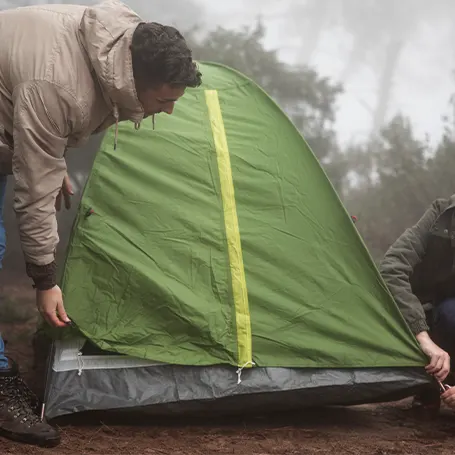
It is an application, usually tape or glue, that is intended to cover the waterproof seams of the tent. Those places are known for potential leaks during heavy rains, dew, water ponding, etc. Water will seep into the tent through the seams if:
- Were not sealed at all
- Worn out over time
Some manufacturers will waterproof the seams during production, but for others, it is an unnecessary expense. In any case, you should know how to do it yourself. So first check if it is necessary to do the procedure – a properly taped tent will have a layer of clear tape integrated into all the seams.
If necessary, apply a sealant with a brush to the seam to ensure penetration into the seam holes. Different tent materials and fabrics require different types of seam sealant – silicone-based (silicone-coated tent) or urethane-based (polyurethane-coated tent).
Patching even the smallest tears
Therefore, best tents are made to be waterproof or water-resistant, which means that even tiny tears or holes can damage this feature. Such weakness can also reduce the tent's ability to withstand strong wind. You know how persistent insects can be, right? Small tears can create an opening for them, as well as heat. Eventually, such holes will grow larger over time.
That is why it is important to address small issues in your tent in time to extend its lifespan. In order to do the job well, always carry a tent repair kit with you, and take the time to patch any damage.
Sleeping essentials for rainy nights
There is something special about those rainy nights. They can really add a serene charm to wet camping trip and outdoor adventures, but only if you've brought the sleeping essentials. Check that all sleeping gear is listed.
High-quality sleeping bags
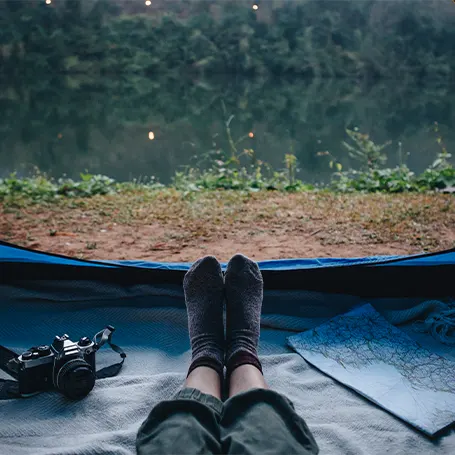
Do you know how to choose a quality one? So there is a division into seasonal sleeping bags: summer bags, three-season bags and winter sleeping bags for keeping body heat. Their insulation can be made of natural or artificial material; the difference is also in the temperature rating. The manufacturer's declaration indicates the minimum temperature for which the bag is intended.
When it comes to the type of material, you need to know its characteristics. For example, down (a natural material) is a sleeping bag's lightest and most effective insulation. It does not take up much space, retains heat longer than synthetics, but dries more slowly. It also has a higher price depending on the amount of down filling.
Synthetic insulation is usually a fluffy polyester material that does not absorb water, making it a better choice for rainy nights. We must not forget about the special covers for the bag. They are rubberised or made of an active material that prevents moisture absorption from the outside. They also have special, waterproof closures and seams through which outside water cannot penetrate the bag.
Waterproof sleeping pad
Well, one of the downsides of camp in the rain is that you can't bring your perfect mattress! But there are also camping mattresses. A hard and cold surface during wet weather can become a much better place to sleep if you consider its characteristics. Therefore, pay attention to several items when buying.
- Material and design – look for water-resistant materials (laminated or coated fabric repels water) and self-inflating or inflatable sleeping pads
- R-Value – it is the level of insulation in relation to the cold surface; higher R-values give better insulation
- Size and thickness – the size should correspond to your body dimensions, and thicker pads often offer more comfort and better insulation
- Weight and packability – take into account the types of planned activities
- Durable and puncture-resistant – they are resistant to rough terrain and sharp objects
Moisture-wicking sleepwear and dry clothes
Rainy nights are much more pleasant when you have someone to keep you warm. Oh, you thought of a love partner? We got you!
In fact, you will need clothes made of quality material the most. So look for moisture-wicking materials like merino wool, synthetic blends or specialised moisture-wicking fabrics. Wet clothes is very dangerous for your health and take it off ASAP!
Breathability properties are also important for waterproof jacket so that air can circulate around your body. In this way, you will prevent excessive sweating and regulate the temperature. So, the priority is quick-drying, but don't forget about comfort and fit. It would not be a bad idea to consider multiple layers of sleepwear, such as a lightweight base layer and a slightly warmer mid-layer.
Creating a cosy ambience in the rain
If you are a fan of Harry Potter, you remember how Hermione cast a spell to make the tent larger on the inside than it appeared on the outside. Well, you may not be a wizard, but there are other ways to transform your small space into a warm and inviting haven. Therefore, use your extension charm and experience a new level of tranquillity and cosiness.
Dim lighting for a relaxing atmosphere
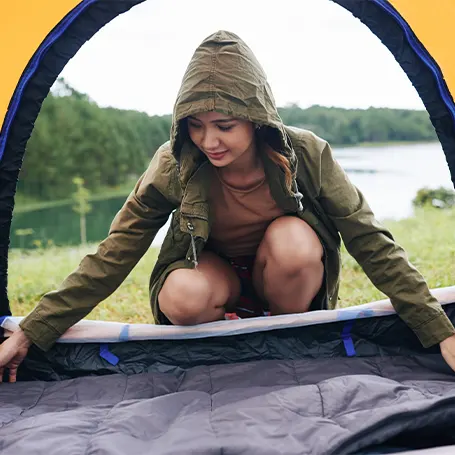
Raindrops can be your symphony and shelter if you get the proper lighting. For this purpose, use soft light sources like LED lanterns with adjustable brightness or string lights with dimming features. Too strong lights can be too intense, while softened lights will create a gentler glow inside the tent.
Warm-coloured lights also promote a relaxing environment, unlike cooler lights that can be stimulating. If you want a warm and flickering glow, add flameless LED candles. Multiple light sources will create an even better effect; you must set the right brightness level.
And besides just looking amazing, dim lighting does also serve a purpose – letting you fall asleep more easily! This is because bright lights can trigger your circadian rhythm and basically make your body believe it's daytime. But with dim lighting, this is a lot less probable.
And this should go without saying but stick to actual lights. While an open flame might look better, it can also fall over and potentially light something on fire. So, we'd advise avoiding candles or even lanterns if you're worried you'll topple it over.
Engaging the senses
For the full nature experience, find an additional way to escape to another world. And what's better than an exciting read? While we are having fun, time passes faster, and reading is a great bedtime activity. The reason is the relaxation and mindfulness effect that helps you unwind and destress.
That way, you focus on the present moment, which helps you to broaden your horizons and spark creativity. Regardless of whether you prefer physical books or e-readers, you will have the best companion! If you still have difficulty falling asleep, use other sleep aids. It can be an app with nature sounds or calming music to enhance the soothing atmosphere further.
Conclusion
Therefore, sleeping in a tent requires mental and physical preparation for good night's sleep. Even if you bring everything with you, expect challenges as well as benefits. Don't worry, you probably won't get eaten by a wild animal. However, pay attention to safety tips to avoid letting other unwanted guests into your tent (insects, moisture, wind). If you've double-checked the tent gear list and you're ready, all you have to do is check the weather forecast and embrace the adventure with a positive attitude. But what do you think about sleeping in a tent in the rain? Do you do it? Tell us all about it in the comment section!
Spread the word
Recommended reading:

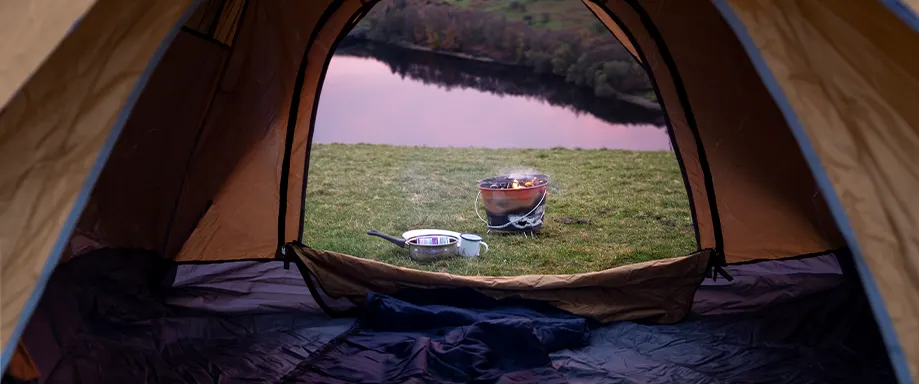

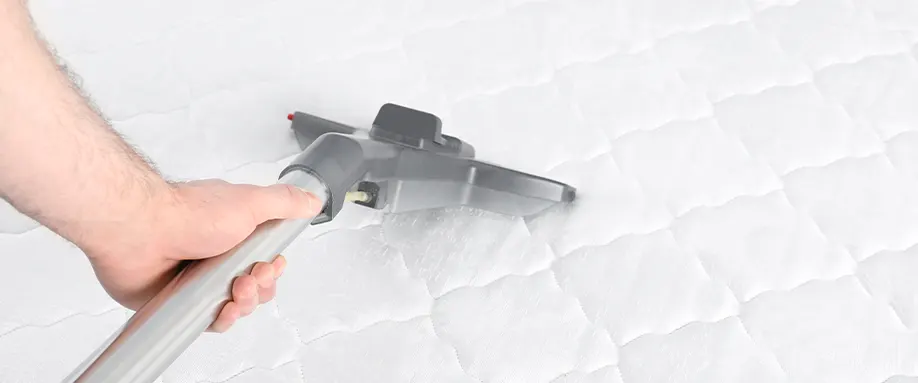











There are no comments yet
"*" indicates required fields